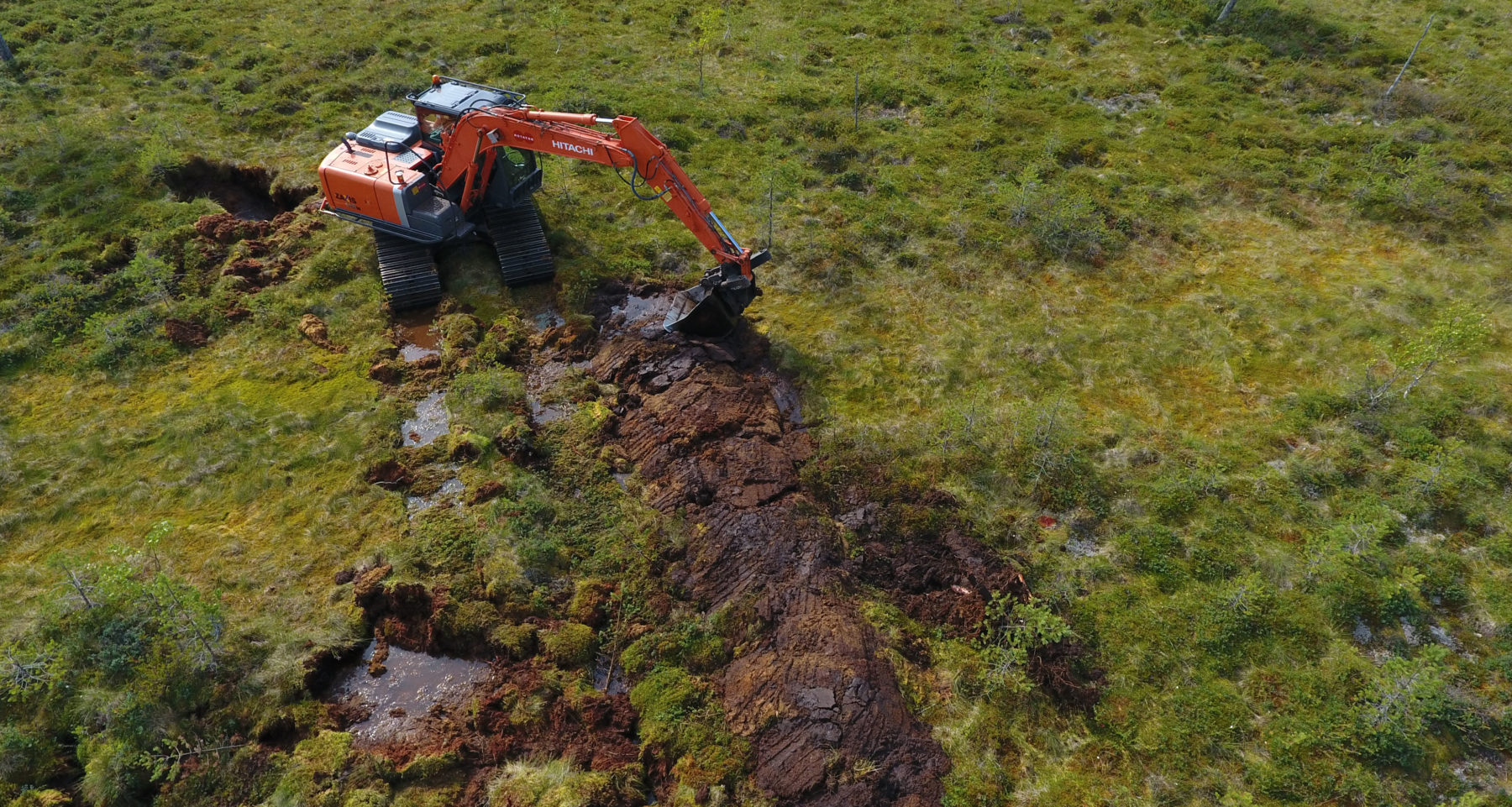Overview
The Hydrology LIFE project safeguards peatlands, small water bodies and important bird lakes in 103 Finnish Natura 2000 areas. During the last few decades, these environments have undergone major changes, including the drainage of more than 60% of Finland’s original peatland area for large-scale forestry. Drainage and alterations in hydrology have also resulted in the loss of open water areas and the habitat they provide for birds. The restoration measures being undertaken as part of the Hydrology LIFE project are aimed at recovering these degraded ecosystems and habitats towards the original state vital for many valuable species, and improving the important functions these systems provide for humans, including flood protection, water quality, and game areas.
Quick Facts
Project Location:
Finland, 61.92410999999999, 25.748151099999973
Geographic Region:
Europe
Country or Territory:
Finland
Biome:
Freshwater
Ecosystem:
Freshwater Wetlands, Freshwater Ponds & Lakes
Area being restored:
more than 5000 hectares
Project Lead:
Metsähallitus Parks & Wildlife Finland
Organization Type:
Governmental Body
Project Partners:
North Savo and Central Finland Centres for Economic Development, Transport and the Environment, Finnish Forest Centre, Tapio Oy, Natural Resources Institute Finland, Metsähallitus Forestry Ltd, and the universities of Jyväskylä, Oulu and Turku.
Location
Project Stage:
Implementation
Start Date:
2017-08-10
End Date:
2023-12-31
Primary Causes of Degradation
Dams & Hydrology, FragmentationDegradation Description
Majority of peatlands in Finland are severely degraded by forestry-drainage, including also areas within protected N2000 sites. Drainage lowers water table and results in degradation of original wet ecosystem structure and functions. Degradation degree: medium.
Dredging, channelization and drainage are widely decreasing the ability of streams and ponds to sustain their natural communities and control the circulation of water. Degradation degree: medium.
The open water areas and mosaics of water and vegetation, that are important as bird nesting and breeding habitat, are decreasing in many lakes due to overgrowth by vegetation and nutrient loading from the surroundings. Degradation degree: medium.
Defining the Reference Ecosystem
The reference ecosystem is primarily based on contemporary reference sites or existing analogues of the pre-degradation ecosystem.Reference Ecosystem Description
Natural-state peatlands, streams and ponds are used as target reference ecosystem. For birdlakes, various information on the preferred ecosystem condition suitable for target species are used.
Project Goals
The blocking of ditches and removal of trees on 5200 hectares in and around 95 Natura 2000 sites recovers the wet and open habitats crucial for many valuable species. The measures also restore peatland’s ability to store water, nutrients and carbon. New methods for simultaneously improving biodiversity conservation and water protection are developed.
We restore 34 km of degraded streams and raise water table in 17 ponds to recover their natural hydrological functioning, and to regain valuable species.
We create open water areas and increase the mosaic structure of habitats e.g. by dredging and raising the water table to improve the habitat quality on four especially important bird lakes.
Monitoring
Monitoring Details:
The wide range of inventories and long-term monitoring up to 10-15 yr after restoration by the project provide invaluable data on how restoration can be used to preserve the biodiversity, to improve water quality and to slow down climate change. Biodiversity monitoring covers plant communities in ca. 150 sites across the country, lake flora and fauna and protected bats. Hydrology is analysed in ca 40 sites.
The information gained by examining how local people and the recreational users of protected areas feel about restoration can be used to develop restoration measures.
Start date, including baseline data collection:
2008
End Date:
2022
Stakeholders
landowners, recreational users of protected areas, hunters, forestry
How this project eliminated existing threats to the ecosystem:
increasing water table level
How this project reinstated appropriate physical conditions (e.g. hydrology, substrate)",:
recovery hydrology
How this project achieved a desirable species composition:
hydrological improvement is expected to lead to recovery of original species composition
How this project reinstated structural diversity (e.g. strata, faunal food webs, spatial habitat diversity):
hydrological restoration is needed to safeguard areas that degrade due to remote ditches
How this project recovered ecosystem functionality (e.g. nutrient cycling, plant-animal interactions, normal stressors):
improvement of chemistry to near-natural conditions is expected after restoration
How this project reestablished external exchanges with the surrounding landscape (e.g. migration, gene flow, hydrology):
peatland restoration will improve stream hydrology downstream as well
Activities were undertaken to address any socio-economic aspects of the project:
comprehensive monitoring and surveys
Ecological Outcomes Achieved
Eliminate existing threats to the ecosystem:
project still in infancy
Reinstate appropriate physical conditions",:
project still in infancy
Achieve a desirable species composition:
project still in infancy
Reinstate structural diversity:
project still in infancy
Recover ecosystem functionality:
project still in infancy
Reestablish external exchanges with the surrounding landscape:
project still in infancy
Factors limiting recovery of the ecosystem:
project still in infancy
Socio-Economic & Community Outcomes Achieved
Economic vitality and local livelihoods:
project still in infancy
Provision of basic necessities such as food, water, timber, fiber, fuel, etc.:
project still in infancy
Cultural dimensions such as recreational, aesthetic and/or spiritual:
project still in infancy
Regulation of climate, floods, disease, erosion, water quality, etc.:
project still in infancy
Has the project had any negative consequences for surrounding communities or given rise to new socio-economic or political challenges?:
project still in infancy
Key Lessons Learned
project just started
Long-Term Management
permanent monitoring network of peatlands will be maintained in state protected areas
Sources and Amounts of Funding
EU LIFE funding
Other Resources
http://www.metsa.fi/web/en/hydrologylife
Related Research
project beneficiaries utilize the data collected in the project and several publications related to structural, functional and socio-economic aspects expectedPrimary Contact
Name:
Tuomas Haapalehto
Affiliation:
Project manager
City:
Jyväskylä


